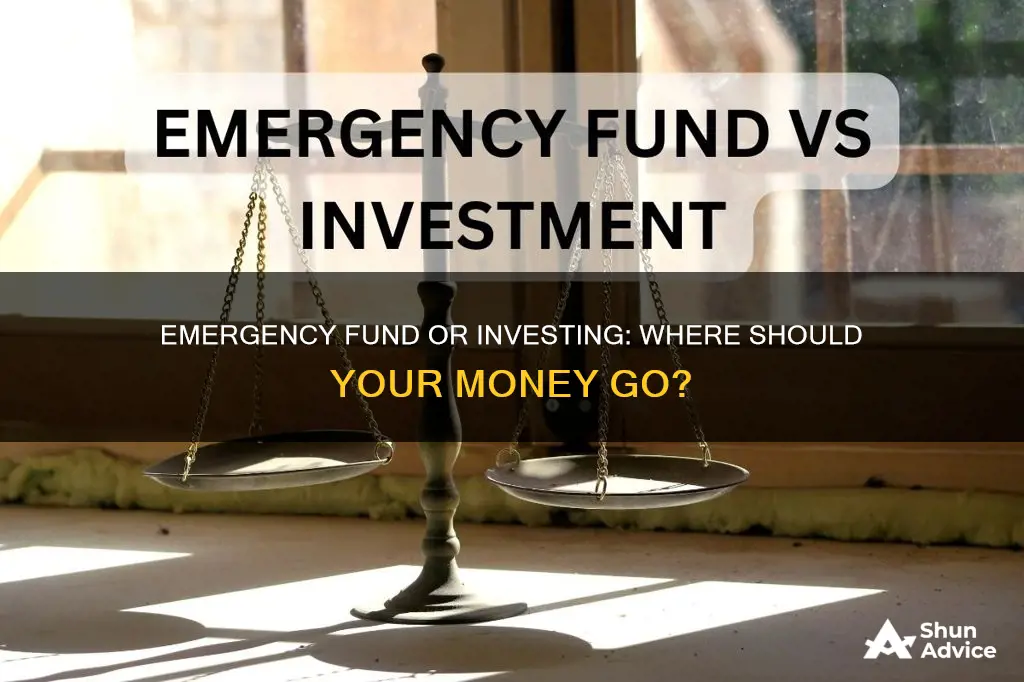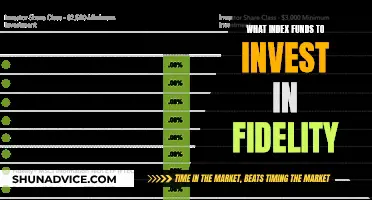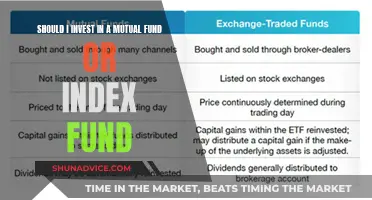
Building an emergency fund is an important part of financial planning. An emergency fund is a safety net that can help you cover unexpected expenses, such as medical bills, home repairs, or even pet surgery. While investing in the stock market can be exciting, it's crucial to have an emergency fund in place first. This ensures that you don't have to liquidate your investments prematurely or incur costly interest charges on credit cards.
The general recommendation is to save three to six months' worth of living expenses in an emergency fund, but this may vary depending on your financial situation and career stability. It's important to keep your emergency fund separate from your daily bank account and consider high-yield savings accounts or short-term investments that offer liquidity and some returns.
However, some financial experts argue that emergency funds could be a bad idea, especially if it means foregoing other financial obligations or accumulating debt. They suggest that paying off high-interest credit card debt or investing in higher-return assets may be a better use of your money. Ultimately, the decision to build an emergency fund or invest depends on your personal financial situation and risk tolerance.
| Characteristics | Values |
|---|---|
| Should I build an emergency fund before investing? | Yes |
| Why? | To avoid selling investments at a loss |
| How much should I save? | 3-6 months' worth of expenses |
| Where should I put my emergency fund? | High-yield savings account |
| What are the risks of investing an emergency fund? | Losing money, less accessibility |
What You'll Learn

Investing your emergency fund could lead to losing money
Firstly, investing in the stock market or other assets always carries some risk. The market can fluctuate, and values can dip at any time, which can be problematic if your investments lose value at the same time you need to withdraw them to cover an emergency expense. For example, if you invest your emergency fund of $5,000 into stocks, it could be worth $4,000 or less if the market takes a downturn. This means you would have less money to cover your emergency costs.
Additionally, if you invest your emergency fund and need to withdraw it during a market downturn, you may be forced to sell your investments at a loss. This could hurt your chances of reaching your long-term financial goals.
Another consideration is the potential tax consequences of investing your emergency fund. If you invest in a taxable brokerage account, you will be responsible for paying taxes when you sell shares and realize gains. The tax rate depends on how long you have held the shares, with short-term capital gains (usually less than a year) taxed at your regular income tax rate, and long-term capital gains taxed at a lower rate, typically between 0% and 20%. If you need to withdraw from your emergency fund investment within a year, you will likely owe more in taxes.
Furthermore, it is important to have quick access to your emergency funds when unexpected expenses arise. While some investment options, such as money market accounts or high-yield savings accounts, offer relatively easy access to your money, they may still require extra steps and time compared to simply having the funds in your bank account.
Finally, while investing your emergency fund may offer the potential for higher returns, it is important to remember that savings accounts also provide a modest return through interest. Although the interest rate on savings accounts may be lower than potential investment returns, it is a safer option that protects your principal amount and provides some growth over time.
In conclusion, investing your emergency fund could lead to losing money due to market fluctuations, tax consequences, reduced accessibility, and the potential for negative returns. It is crucial to weigh these risks carefully before making any investment decisions regarding your emergency fund.
Retirement Fund: Investing for a Secure Future
You may want to see also

You'll owe taxes when you need to make a withdrawal
It is important to note that investing your emergency fund into a taxable brokerage account will make you liable to pay taxes when you sell shares and realise your gains. The tax rate you will pay depends on when you bought the shares and when you sold them.
If you sell assets that you have held for one year or less, you will be subject to a short-term capital gains tax, which is usually the same as your regular income tax rate. On the other hand, if you sell assets that you have kept for over a year, you will pay a long-term capital gains tax, which is between 0% and 20%. Generally, it is better to be taxed at the long-term capital gains rate as you would typically owe less in taxes. However, emergencies cannot always be predicted, and you may be forced to sell your assets less than a year after buying them, resulting in a higher tax payment.
For example, if you have invested in a tax-advantaged retirement account, such as a 401(k) or an IRA account, and you need to withdraw your money due to an unplanned emergency, you may be hit with a 10% early withdrawal penalty on top of the taxes owed on the withdrawn funds at your ordinary income tax rate.
Therefore, it is crucial to consider the tax implications when deciding whether to invest your emergency fund. While investing may offer the potential for higher returns, the additional taxes incurred during a withdrawal could reduce those gains. It is essential to weigh the benefits and risks carefully before making any investment decisions.
Invest Wisely: Bitwise Index Fund Strategies for Beginners
You may want to see also

Emergency funds are crucial for unexpected costs
An emergency fund is a bank account with money set aside for large, unexpected expenses. This could include unforeseen medical expenses, home appliance repair or replacement, or a sudden loss of income. Having an emergency fund can help you avoid borrowing money or taking on high-interest debt to cover these costs.
The recommended amount for an emergency fund is typically three to six months' worth of living expenses. This can vary depending on your financial situation and job security. If you are a freelancer or have seasonal work, for example, you may want to save a more substantial emergency fund.
It is important to keep your emergency fund in a safe and easily accessible account. A high-yield savings account is a good option, as it offers a relatively high-interest rate and easy access to your money. You could also consider putting your emergency fund into a money market account, a short-term certificate of deposit, or certain types of investment accounts, such as a Roth IRA, that allow you to withdraw your contributions without penalty.
Building an emergency fund ensures that you have a financial buffer to fall back on when unexpected costs arise. It helps you avoid dipping into your long-term investments prematurely or going into debt. While it may seem challenging to save for an emergency fund, especially if you have other financial goals, it is an essential part of a comprehensive financial plan.
Mutual Funds in Your 20s: A Guide to Getting Started
You may want to see also

Emergency funds are recommended to be 3-6 months' worth of savings
It is recommended that emergency funds should be three to six months' worth of savings. This will help you cover sudden and unexpected expenses such as unforeseen medical expenses, home appliance repair or replacement, or a car accident that isn't covered by insurance.
The exact amount you need in your emergency fund will depend on your financial circumstances. For example, if you freelance or work seasonally, you may need more than six months' worth of expenses. If your income is mostly stable, a smaller emergency fund might work.
- Calculate your total expenses for six months.
- Set a monthly savings goal and focus on smaller, attainable milestones.
- Arrange to have that money automatically deposited or transferred to a savings account, certificate of deposit, money market fund, or short-term fixed-income securities.
- Consider putting part of your emergency fund in a savings account and the rest in a short-term bond fund to benefit from compound interest.
- Assess and adjust your contributions every few months.
By following these steps, you can ensure that you have enough savings to cover unexpected expenses without having to dip into your long-term investments.
Maximizing Your HSA Funds: Smart Investment Strategies
You may want to see also

Emergency funds are best kept in a savings account
Secondly, a savings account provides easy access to your funds in case of an emergency. While you don't want to be dipping into your emergency funds regularly, when a true emergency arises, you'll want to be able to access your money quickly. With a savings account, you can typically withdraw funds or transfer them to another account with ease.
Thirdly, a savings account allows your money to earn interest. While the interest rates on savings accounts may not be as high as those offered by riskier investments, they still provide a modest return on your money. This helps to offset the effects of inflation, which can erode the purchasing power of your emergency fund over time.
Additionally, keeping your emergency fund in a savings account separate from your regular checking or brokerage account adds a layer of protection. By having a separate account, you're less likely to be tempted to dip into your emergency funds for non-essential purchases or investments. This helps ensure that your emergency funds are truly reserved for unexpected expenses.
Finally, a savings account provides stability for your emergency funds. While investing your emergency funds may offer the potential for higher returns, it also carries the risk of losing money. The stock market can be volatile, and if you need to withdraw funds during a market downturn, you could be forced to sell your investments at a loss. With a savings account, your principal balance is preserved, and you can withdraw your funds without worrying about market fluctuations.
In conclusion, keeping your emergency funds in a savings account offers a combination of security, accessibility, and stability. While investing your emergency funds may be tempting, the potential risks often outweigh the potential rewards. By keeping your emergency funds in a savings account, you can rest assured that your money will be there when you need it most.
Maximizing Your HSA: Mutual Fund Investing Strategies
You may want to see also
Frequently asked questions
Building an emergency fund before investing is beneficial as it ensures that you have a financial buffer to fall back on in case of unexpected expenses. This can include unforeseen medical expenses, home appliance repairs, or even emergency surgery for a pet. By having an emergency fund, you can avoid dipping into your long-term investments prematurely or taking on high-interest debt.
The general rule of thumb is to save anywhere between three to six months' worth of living expenses in your emergency fund. However, this may vary depending on your financial situation and career stability. For example, if you work freelance or have an unstable income, you may want to save up to a year's worth of expenses.
It is recommended to keep your emergency fund in a savings account that is separate from your daily bank account. This ensures that you are not tempted to dip into your emergency funds for non-essential purchases. Look for a high-interest savings account that offers easy access to your money, such as a money market account or a high-yield savings account. This way, you can earn a little interest on your savings while still keeping your funds liquid and readily available in case of an emergency.







